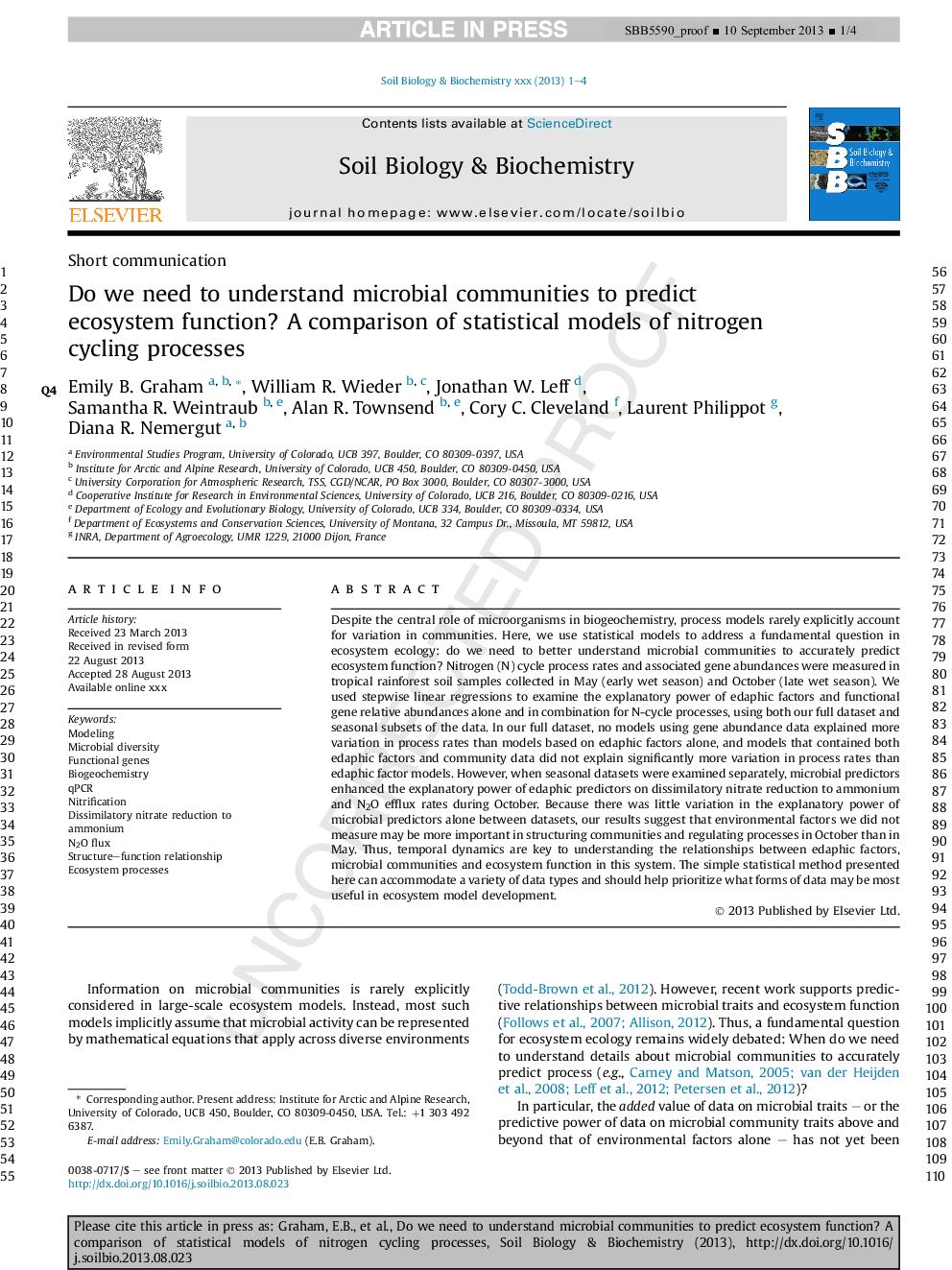| کد مقاله | کد نشریه | سال انتشار | مقاله انگلیسی | نسخه تمام متن |
|---|---|---|---|---|
| 8365189 | 1542616 | 2014 | 4 صفحه PDF | دانلود رایگان |
عنوان انگلیسی مقاله ISI
Do we need to understand microbial communities to predict ecosystem function? A comparison of statistical models of nitrogen cycling processes
ترجمه فارسی عنوان
آیا ما باید جوامع میکروبی را پیش بینی کنیم تا عملکرد اکوسیستم را پیش بینی کنیم؟ مقایسه مدل های آماری فرایندهای دوچرخه سواری نیتروژن
دانلود مقاله + سفارش ترجمه
دانلود مقاله ISI انگلیسی
رایگان برای ایرانیان
کلمات کلیدی
qPCRBiogeochemistry - بیوژئوشیمى N2O flux - جریان N2OStructure–function relationship - ساختار-عملکرد رابطهEcosystem processes - فرآیندهای اکوسیستمModeling - مدلسازیNitrification - نیتریفیکاسیونFunctional genes - ژنهای عملکردیdissimilatory nitrate reduction to ammonium - کاهش نیترات متابولیسم به آمونیاک
موضوعات مرتبط
علوم زیستی و بیوفناوری
علوم کشاورزی و بیولوژیک
دانش خاک شناسی
چکیده انگلیسی
Despite the central role of microorganisms in biogeochemistry, process models rarely explicitly account for variation in communities. Here, we use statistical models to address a fundamental question in ecosystem ecology: do we need to better understand microbial communities to accurately predict ecosystem function? Nitrogen (N) cycle process rates and associated gene abundances were measured in tropical rainforest soil samples collected in May (early wet season) and October (late wet season). We used stepwise linear regressions to examine the explanatory power of edaphic factors and functional gene relative abundances alone and in combination for N-cycle processes, using both our full dataset and seasonal subsets of the data. In our full dataset, no models using gene abundance data explained more variation in process rates than models based on edaphic factors alone, and models that contained both edaphic factors and community data did not explain significantly more variation in process rates than edaphic factor models. However, when seasonal datasets were examined separately, microbial predictors enhanced the explanatory power of edaphic predictors on dissimilatory nitrate reduction to ammonium and N2O efflux rates during October. Because there was little variation in the explanatory power of microbial predictors alone between seasonal datasets, our results suggest that environmental factors we did not measure may be more important in structuring communities and regulating processes in October than in May. Thus, temporal dynamics are key to understanding the relationships between edaphic factors, microbial communities and ecosystem function in this system. The simple statistical method presented here can accommodate a variety of data types and should help prioritize what forms of data may be most useful in ecosystem model development.
ناشر
Database: Elsevier - ScienceDirect (ساینس دایرکت)
Journal: Soil Biology and Biochemistry - Volume 68, January 2014, Pages 279-282
Journal: Soil Biology and Biochemistry - Volume 68, January 2014, Pages 279-282
نویسندگان
Emily B. Graham, William R. Wieder, Jonathan W. Leff, Samantha R. Weintraub, Alan R. Townsend, Cory C. Cleveland, Laurent Philippot, Diana R. Nemergut,
